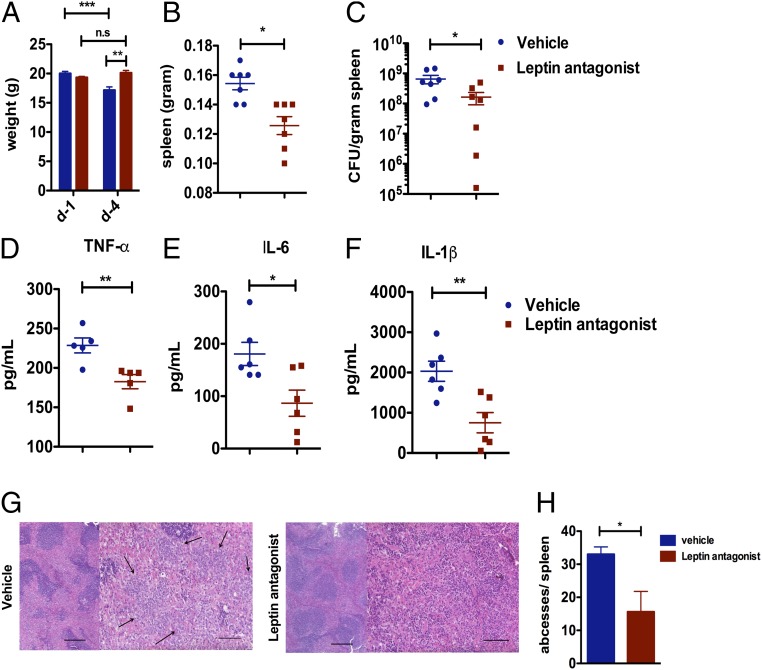Fig. 4.
Leptin antagonist reduces bacterial burden and inflammation in vivo. (A) Leptin antagonist and vehicle-treated WT mice were infected with S. Typhimurium and the weights of the mice were monitored on day 1 (d-1) and day 4 (d-4) after infection. (B) On day 4, spleens were isolated and weighed. (C) Bacterial burden in the spleen was estimated, and the inflammatory cytokines TNF-α (D), IL-6 (E), and IL-1β (F) were measured by ELISA. (G) HE staining of spleen tissue sections from 4 d after i.p. S. Typhimurium-infected vehicle and leptin antagonist-treated mice. →, abscesses. (H) Bar graph showing the number of abscesses per spleen from S. Typhimurium-infected vehicle and leptin antagonist-treated mice. Data are shown as mean ± SEM and statistical significance calculated using Student t test and represented as *P < 0.05; **P < 0.01; ***P < 0.001. (Scale bars: 200 μm.)

